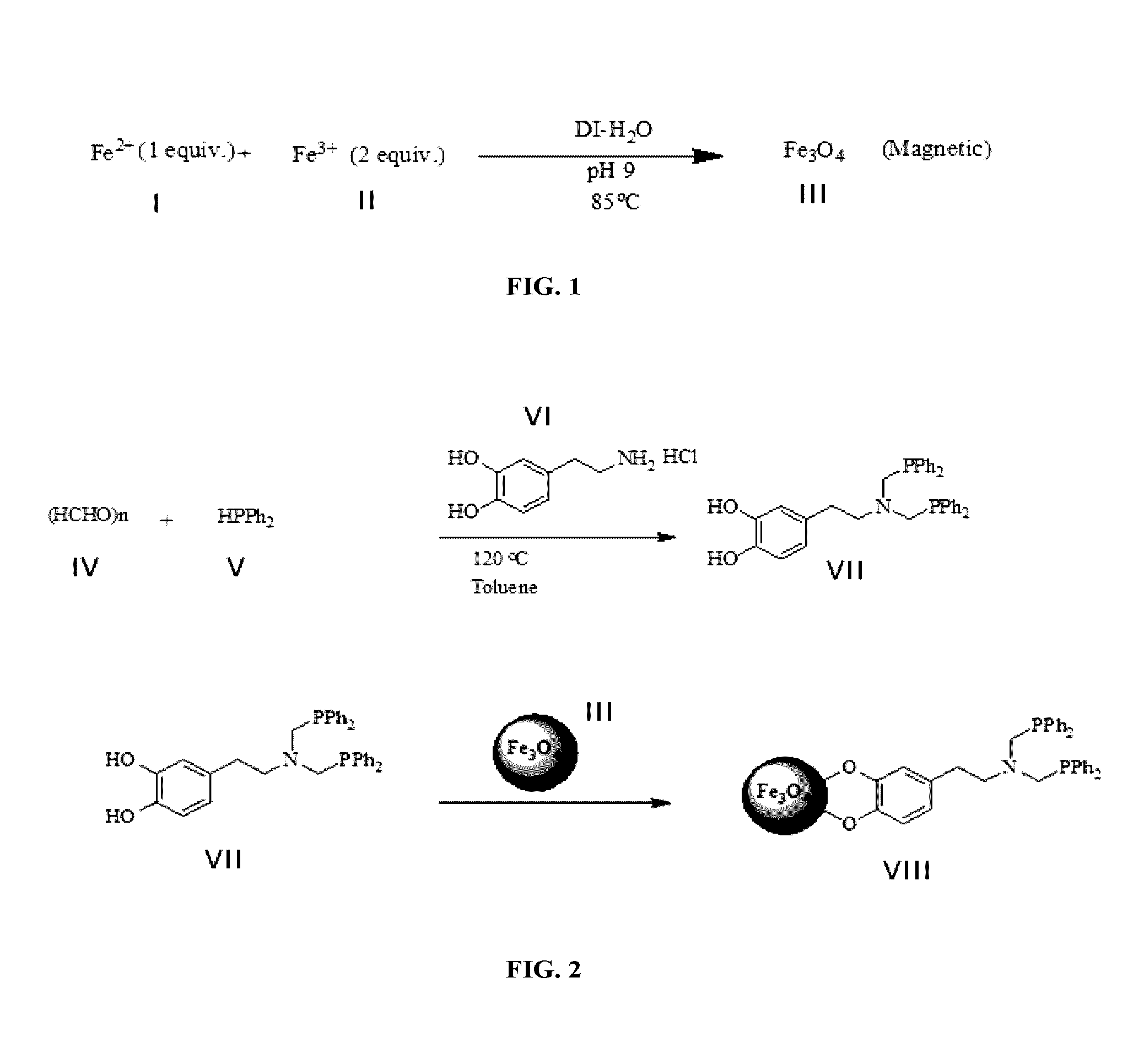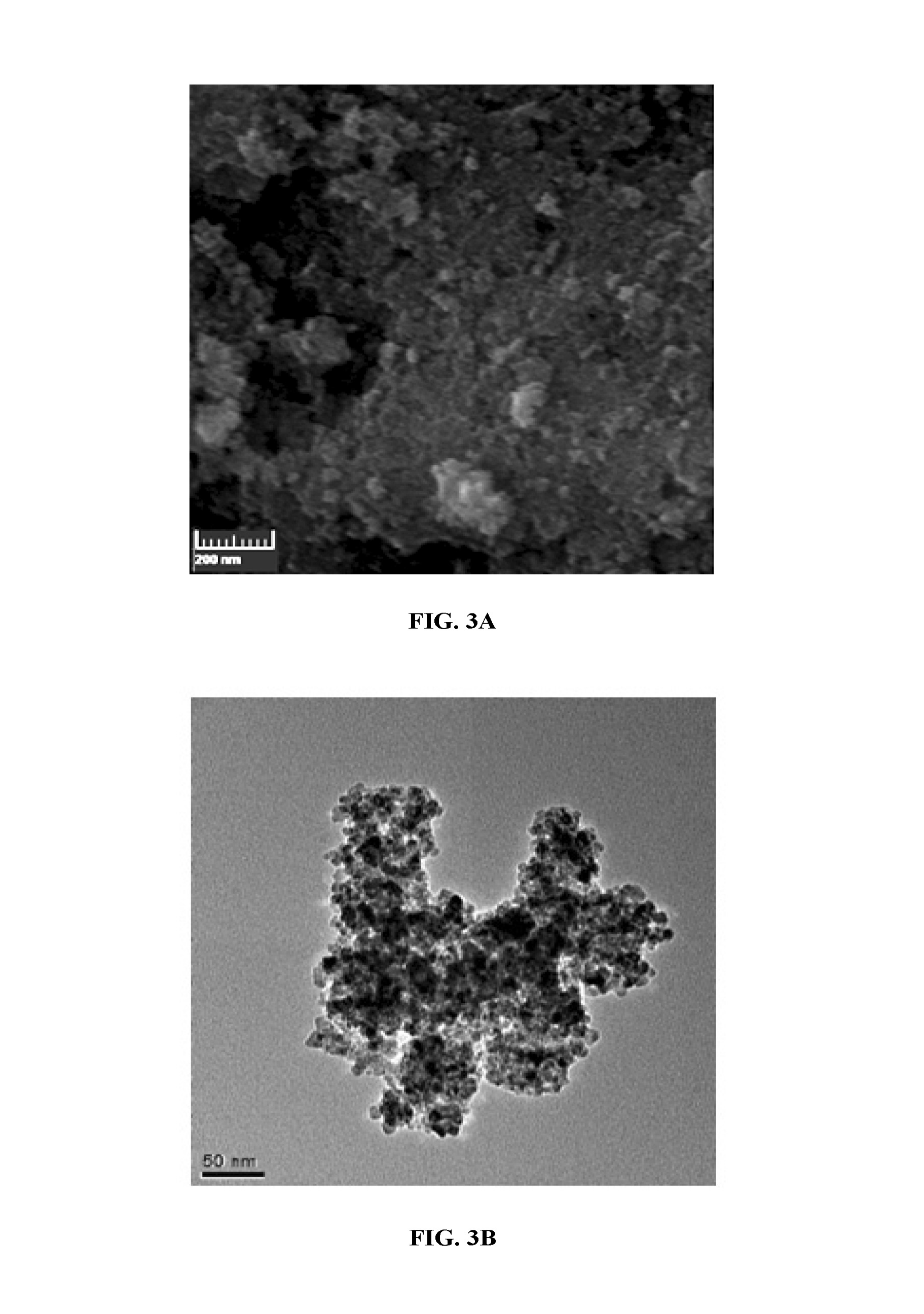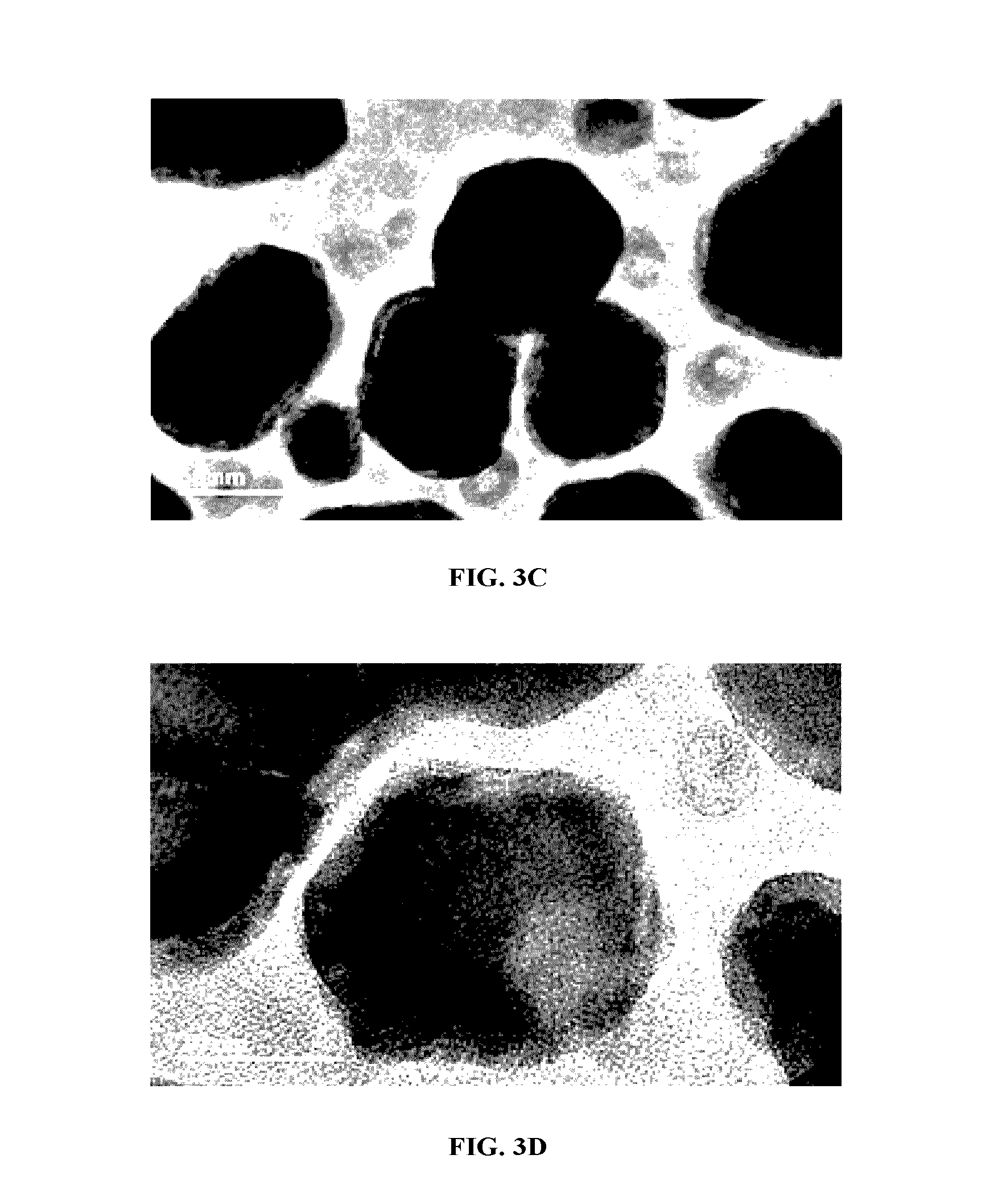Surface bonded Rh-bis(diarylphosphine) on magnetic nanoparticles as a recyclable catalyst for hydroformylation of olefins
a surface bonded, recyclable technology, applied in the direction of organic compounds/hydrides/coordination complexes catalysts, physical/chemical process catalysts, iron organic compounds, etc., can solve the problems of reduced overall reactivity, prohibitively high separation cost, and need to use fairly expensive chemicals and relatively large amounts of precious metals
- Summary
- Abstract
- Description
- Claims
- Application Information
AI Technical Summary
Benefits of technology
Problems solved by technology
Method used
Image
Examples
example 1
Chemicals
[0108]All reactions were carried out under argon atmosphere using standard Schlenk technique. Chemicals were all purchased from Sigma-Aldrich Company and were utilized directly as received without further purification unless otherwise noted. Deionized (DI) water was obtained from a water purification system and used wherever needed.
example 2
Synthesis of Magnetic Nanoparticles (MNPs)
[0109]Magnetite (Fe3O4) nanoparticles in the range of 5-7 nm were synthesized (FIG. 1) according to the procedure reported in the literature [J. Hee Yang, B. Ramaraj and K. R. Yoon, Journal of Alloys and Compounds 2014, 583, 128—incorporated herein by reference in its entirety]. The magnetic nanoparticles were prepared by co-precipitation techniques with the reaction of a 1:2 molar mixture of Fe (II) and Fe (III) precursors. The medium of the reaction was made alkaline using concentrated ammonium hydroxide and the pH was kept constant at 9 for 4 hours. The black colored solid materials were collected using a strong magnet after repeated washing with water to remove unreacted iron precursors (FIG. 1).
[0110]Briefly, 2 grams of hydrated FeCl2 (10 mmol) and 8.08 g of FeCl3 (20 mmol) were dissolved in 200 mL of deionized water under argon at 90° C. with vigorous stirring. Concentrated NH4OH was slowly added until the solution attained a pH of 9, ...
example 3
Synthesis of bis(methyldiphenylphosphino) dopamine (bpd) ligand
[0111]Dopamine was functionalized by a double phosphinomethylation step on primary amine via reaction of dopamine hydrochloride and diphenylphosphinomethanol (FIG. 2). The first step of this reaction was to prepare phosphinoalcohol. Diphenylphosphine was allowed to react with paraformaldehyde in dry toluene under heating at 120° C. for 4 hours and the turbid solution became clear. The dopamine was phosphinylated using a straight forward reaction with quantitative yield [I. Angurell, C.-O. Turrin, R. Laurent, V. Maraval, P. Servin, O. Rossell, M. Seco, A.-M. Caminade and J.-P. Majora, Journal of Organometallic Chemistry 2007, 692, 1928; and P. Servin, R. Laurent, A. Romerosa, M. Peruzzini, J.-P. Majoral, and A.-M. Caminade, Organometallics 2008, 27, 2066—each incorporated herein by reference in its entirety]. In this reaction, equimolar amounts of dopamine hydrochloride were added in situ into the reaction system and it w...
PUM
| Property | Measurement | Unit |
|---|---|---|
| diameter | aaaaa | aaaaa |
| thickness | aaaaa | aaaaa |
| temperature | aaaaa | aaaaa |
Abstract
Description
Claims
Application Information
 Login to View More
Login to View More - R&D
- Intellectual Property
- Life Sciences
- Materials
- Tech Scout
- Unparalleled Data Quality
- Higher Quality Content
- 60% Fewer Hallucinations
Browse by: Latest US Patents, China's latest patents, Technical Efficacy Thesaurus, Application Domain, Technology Topic, Popular Technical Reports.
© 2025 PatSnap. All rights reserved.Legal|Privacy policy|Modern Slavery Act Transparency Statement|Sitemap|About US| Contact US: help@patsnap.com



